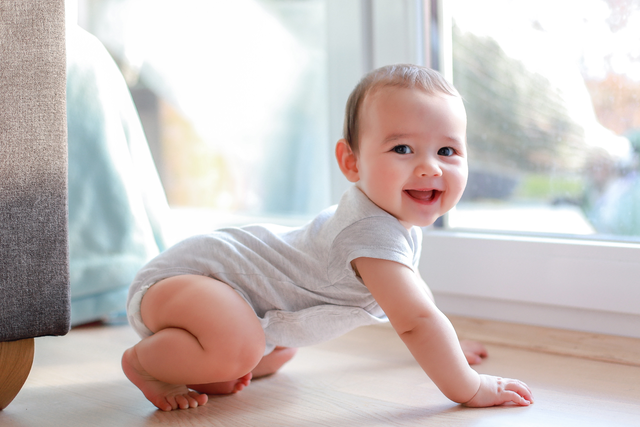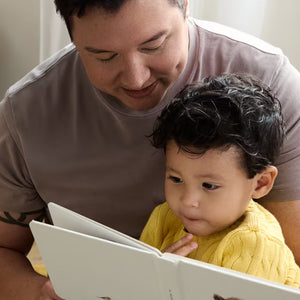If your baby is around six to eight months and you’re seeing changes in sleep (think middle of the night wakings or early morning wakings), it may be time to drop a nap. Let’s talk about the 3 to 2 nap transition.
Want step-by-step guidance through the 3-2 nap transition? My mini class will give you everything you need to navigate this nap transition.
When do babies drop to 2 naps?
The typical age for the 3 to 2 nap transition is between 6.5-8 months. Some babies may transition on the earlier end of this range (or even slightly before), and some won’t be ready until they’re closer to 8 months (or even a little later).
What are the signs my baby is ready for 2 naps?
Your baby may be ready for the 3 to 2 nap transition if they’re between 6.5-8 months AND begin to:
-
have trouble falling asleep at nap time and/or bedtime
-
wake during the night
-
regularly protest or refuse a nap
-
struggle with short naps
-
require a bedtime after 8:00 pm in order to fit the third nap into the day
-
wake before 6:00 am when this wasn’t happening before
A Note About The 3rd Nap: If your baby is younger than 6 months and struggling with the third nap, here’s what I want you to know: when a baby is taking three (or more) naps, the last nap of the day tends to be short. That’s okay! The purpose of this nap is to help your baby make it to bedtime without being overtired. It’s common for babies to fight this nap. That’s okay too! Keep trying to get that nap however you can- maybe it’s by babywearing, going for a walk, or holding your baby- as long as it’s safe, do whatever works!
If your baby is 6.5 months or older and still struggling with the last nap of the day, it may be time to transition to 2 naps.
Can the 3 to 2 nap transition cause early wakings?
It’s possible! Your baby may start to wake earlier as a sign that they’re ready to move from three naps to two. But, you may also temporarily see early morning wakings as part of the transition to two naps. In order to minimize early morning wakings during this transition, be sure to gradually lengthen wake windows and adjust bedtime when daytime sleep doesn’t go as planned.
Expert Tip: Please know that the 3 to 2 nap transition is usually much smoother when your baby is fully ready for it. What does that mean? Ideally, they are consistently showing signs of being ready to drop a nap for 1-2 weeks (not just a couple of rough days). When we drop a nap too early, we often see other sleep issues arise like night wakings, early morning wakings, and short naps.
What are the wake windows for the 3 to 2 nap transition?
When your baby is consistently taking two naps a day, wake windows are between 2.5-4 hours. Typically, when transitioning to two naps, wake windows are on the shorter end of the range. As babies get older, wake windows tend to increase. Here’s a general guide to wake windows when transitioning from a 3 nap schedule to a 2 nap schedule:

Text version of 3 to 2 nap transition wake windows
| 3 Nap Schedule | 2 Nap Schedule |
|---|---|
| Wake | Wake |
| About 2 hours | About 2.5–3 hours |
| Nap 1 | Nap 1 |
| About 2.5 hours | About 3 hours |
| Nap 2 | Nap 2 |
| About 2.5 hours | About 3-3.5 hours |
| Nap 3 | Bedtime |
| About 2.5 - 3 hours | None |
| Bedtime | None |
Which nap gets dropped during the 3 to 2 nap transition?
During the transition from 3 naps to 2, wake windows increase, gradually shifting the naps later in the day. Eventually, there simply isn’t time for the third nap between the end of the second nap and bedtime.
How long does it take to transition from 3 naps to 2?
Some little ones transition from three naps to two fairly quickly, while others can go back and forth between 2 and 3 naps for around 2-4 weeks. Much of this depends on how long your little one naps.
How do you transition to 2 naps?
-
Focus on active awake time during the day. The trickiest part about transitioning from 3 naps to 2 is that wake windows need to be longer than before. Stretch wake windows by adding engaging activities.
-
Continue with a nap time routine. A predictable nap time routine sets your little one up for a restorative nap.
-
Use an early bedtime if naps are short. If the second nap ends earlier than expected, it may be difficult to keep your baby awake until their normal bedtime. A bedtime as early as 6:00-6:30 pm can help.
-
Ask for help when you need it. If your little one is struggling with sleep or you’d like more guidance with this transition, I have classes for you. If sleep is generally going well and you want help just for this nap transition, my mini class will give you everything you need.
If all of sleep is a mess, my 5-24 Month Collection is just what you need and will give you step-by-step guidance to set your little one up for great days, consolidated nights, and skills to overcome every bump on your journey.








